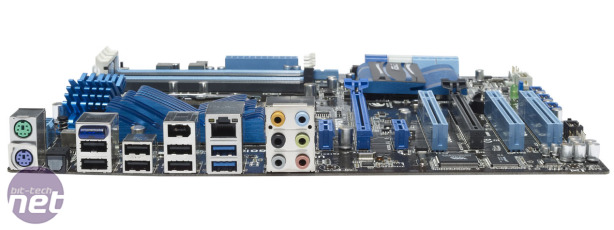
Asus P8P67 Review
Manufacturer: AsusUK price (as reviewed): £119.99 (inc VAT)
US price (as reviewed): $159.99 (ex tax)
There has been a lot of excitement surrounding the release of Intel’s new LGA1155 processors, but considerably less fuss over the budget H67 and enthusiast P67 chipsets that accompany the release. This is perhaps because the new chipsets are only updates to the 5-series chipsets they replace, rather than radical redesigns. However, it’s important to be aware of a few key differences and upgrades before diving in.
The first is that both chipsets finally have native SATA 6Gbps support, although it’s worth noting that this applies to only two of the six SATA ports that the P67 and H67 chipsets provide. Secondly, only the H67 chipset can take advantage of the on-board GPU built into all LGA1155 processors, as the P67 chipset doesn’t support any display connections, necessitating the use of a discrete graphics card.
Finally, only the P67 chipset supports CPU overclocking. If you strap a nice shiny K-series CPU into an H67 motherboard, you won’t be able to overclock it, although bizarrely you’ll be able to overclock its GPU. It’s fortunate, then, that the first LGA1155 board to make it into our lab – the £120 Asus P8P67 – is based on the P67 chipset.
The P8P67 is smartly decked out in Asus’ traditional blue and black colour scheme, and the aquamarine heatsinks are particularly eye-catching with their crystalline design. As such, it’s a shame that these pretty heatsinks were the first stumbling block, as they obstructed the mounting bracket of the Titan Fenrir cooler we use for testing.
This was easy for us to resolve, as we had a Corsair H50 lying around that fitted perfectly, but it would be frustrating if your build was halted because you couldn’t fit your cooler. It was the protruding Socket AM3 mounting lugs of the Fenrir’s mounting plate that clashed with the heatsinks, so you should be okay if your cooler uses a dedicated LGA1155 mounting plate.
Thankfully, the rest of the P8P67 is laid out sensibly, with a large gap between the two 16x PCI-E slots, and SATA ports that are mounted parallel to the motherboard in order to aid tidy cabling. However, dual-GPU enthusiasts should note that the second 16x PCI-E slot provides only four lanes of bandwidth, and that SLI and CrossFire aren’t supported. The internal USB 3 header is also well positioned, as it’s located next to the ATX power connector so that it’s positioned near to your front panel cables.
The P8P67’s rear I/O panel is well appointed, with six USB 2 ports, two USB 3 ports and PS/2 ports for both a mouse and a keyboard. You’ll also find the familiar six audio jacks, plus ports for Gigabit Ethernet and FireWire. More unusual is the small blue protrusion that sits above two of the USB ports. This is a Bluetooth antenna for Asus’ new BT GO! Technology, which lets you transfer files between the motherboard and another Bluetooth-enabled device. The technology also enables you to use your smartphone as a remote control.
The board also plays host to the second generation of Asus’ EPU and TPU chips which, when enabled through the on-board hardware switches, adjust your motherboard’s settings. The EPU chip claims to tune your board for maximum efficiency, while the TPU chip overclocks and overvolts your CPU automatically.
Specifications
- Chipset Intel P67
- CPU support LGA1155 Core i3, Core i5 and Core i7
- Memory support 4 slots: max 32GB DDR3 (2,400MHz)
- Expansion slots Two 16x PCI-E 2.0 slots (one 16x, one 4x), three PCI, two 1x PCI-E
- Sound Intel HD Audio via Realtek ALC892 with 8-channel support
- Networking Realtek 8111E Gigabit Ethernet
- Overclocking CPU Clock 80 – 300MHz; max voltages, CPU 2.2V, VCCSA 1.7V, VCCIO 1.7V, CPU PLL 2.2V, PCH 1.7
- Ports 4 x SATA 3Gbps, 4 x SATA 6Gbps, 2 x PS/2, 12 x USB 2, 4 x USB 3, 2 x FireWire, LAN, 4 x surround audio out, line in, mic, optical S/PDIF out
- Dimensions (mm) 305 x 244 (ATX)

MSI MPG Velox 100R Chassis Review
October 14 2021 | 15:04










Want to comment? Please log in.